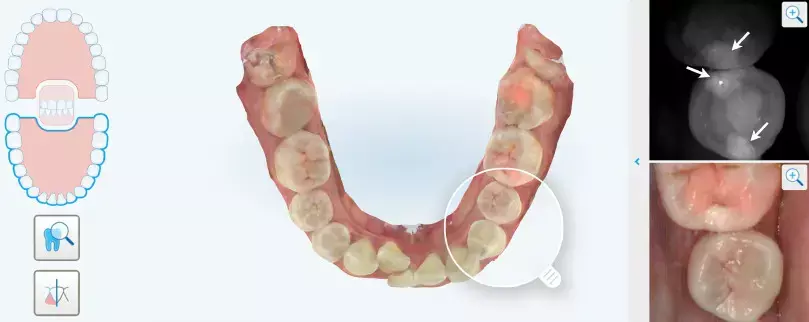- Home
- Medical news & Guidelines
- Anesthesiology
- Cardiology and CTVS
- Critical Care
- Dentistry
- Dermatology
- Diabetes and Endocrinology
- ENT
- Gastroenterology
- Medicine
- Nephrology
- Neurology
- Obstretics-Gynaecology
- Oncology
- Ophthalmology
- Orthopaedics
- Pediatrics-Neonatology
- Psychiatry
- Pulmonology
- Radiology
- Surgery
- Urology
- Laboratory Medicine
- Diet
- Nursing
- Paramedical
- Physiotherapy
- Health news
- Fact Check
- Bone Health Fact Check
- Brain Health Fact Check
- Cancer Related Fact Check
- Child Care Fact Check
- Dental and oral health fact check
- Diabetes and metabolic health fact check
- Diet and Nutrition Fact Check
- Eye and ENT Care Fact Check
- Fitness fact check
- Gut health fact check
- Heart health fact check
- Kidney health fact check
- Medical education fact check
- Men's health fact check
- Respiratory fact check
- Skin and hair care fact check
- Vaccine and Immunization fact check
- Women's health fact check
- AYUSH
- State News
- Andaman and Nicobar Islands
- Andhra Pradesh
- Arunachal Pradesh
- Assam
- Bihar
- Chandigarh
- Chattisgarh
- Dadra and Nagar Haveli
- Daman and Diu
- Delhi
- Goa
- Gujarat
- Haryana
- Himachal Pradesh
- Jammu & Kashmir
- Jharkhand
- Karnataka
- Kerala
- Ladakh
- Lakshadweep
- Madhya Pradesh
- Maharashtra
- Manipur
- Meghalaya
- Mizoram
- Nagaland
- Odisha
- Puducherry
- Punjab
- Rajasthan
- Sikkim
- Tamil Nadu
- Telangana
- Tripura
- Uttar Pradesh
- Uttrakhand
- West Bengal
- Medical Education
- Industry
NIRI promising radiation-free method for early detection of proximal caries in permanent teeth: Study

NIRI promising radiation-free method for early detection of proximal caries in permanent teeth suggests a study published in the Journal of Dentistry.
This study aimed to evaluate the diagnostic performance of near-infrared imaging (NIRI) and unaided visual examination (UVE) in detecting proximal caries in permanent dentition in comparison with cone-beam computed tomography (CBCT). Patients who underwent NIRI, UVE, and CBCT imaging within 1 week were enrolled. Using CBCT as the reference test, the positive percent agreement (PPA), negative percent agreement (NPA), and overall percent agreement (OPA) of NIRI, UVE, and a combination of the two for detecting proximal caries at different depths and in different tooth locations were assessed. Additionally, the consistency of these diagnostic methods with CBCT was evaluated.
Results: They evaluated 6,084 proximal surfaces and identified 177 CBCT-positive sites. NIRI had a PPA, NPA, and OPA of 68.93 %, 99.09 %, and 98.21 %, respectively, with a substantial agreement with CBCT. When combined with UVE, the PPA increased by approximately 50 % compared with that of UVE alone. Regarding caries at different depths, NIRI outperformed UVE in detecting initial caries (ICDAS 1–2) over moderate-to-advanced caries (ICDAS 3–6). However, the combined use of NIRI and UVE improved the detection of moderate-to-advanced caries. In the anterior teeth region, NIRI exhibited excellent agreement with CBCT, surpassing its performance in the posterior region. Although NIRI cannot fully replace radiographic methods, the substantial agreement of NIRI with CBCT in detecting proximal caries highlights its potential as a complementary tool in routine caries screening, especially when combined with UVE. This study highlights the potential of NIRI as a radiation-free method for detecting proximal caries in permanent teeth. Early detection through regular NIRI scanning can lead to timely intervention, improved patient outcomes, and reduced overall disease burden.
Reference:
Kai Xia, Wenxin Lu, Zhongcheng Li, Yang Zhang, Rui Ye, Zhihe Zhao,
Comparison of near-infrared imaging with cone-beam computed tomography for proximal caries detection in permanent dentition: An in vivo study. Journal of Dentistry, Volume 145, 2024, 104994, ISSN 0300-5712. https://doi.org/10.1016/j.jdent.2024.104994.
(https://www.sciencedirect.com/science/article/pii/S0300571224001647)
Dr. Shravani Dali has completed her BDS from Pravara institute of medical sciences, loni. Following which she extensively worked in the healthcare sector for 2+ years. She has been actively involved in writing blogs in field of health and wellness. Currently she is pursuing her Masters of public health-health administration from Tata institute of social sciences. She can be contacted at editorial@medicaldialogues.in.
Dr Kamal Kant Kohli-MBBS, DTCD- a chest specialist with more than 30 years of practice and a flair for writing clinical articles, Dr Kamal Kant Kohli joined Medical Dialogues as a Chief Editor of Medical News. Besides writing articles, as an editor, he proofreads and verifies all the medical content published on Medical Dialogues including those coming from journals, studies,medical conferences,guidelines etc. Email: drkohli@medicaldialogues.in. Contact no. 011-43720751


